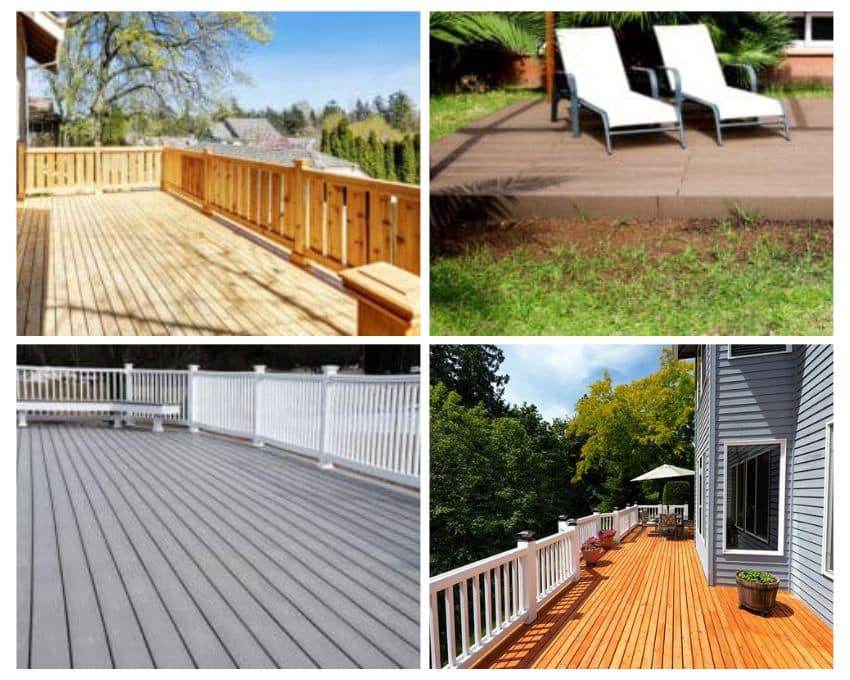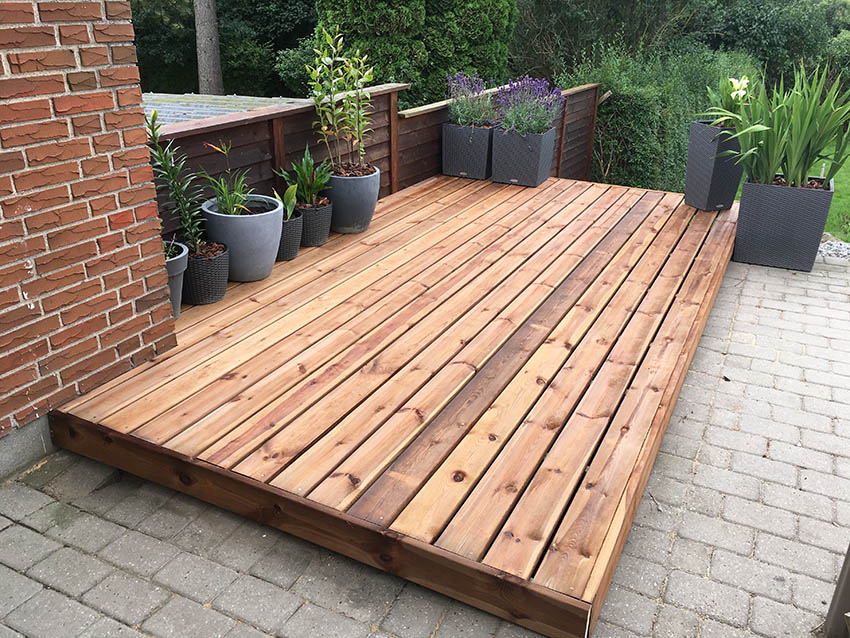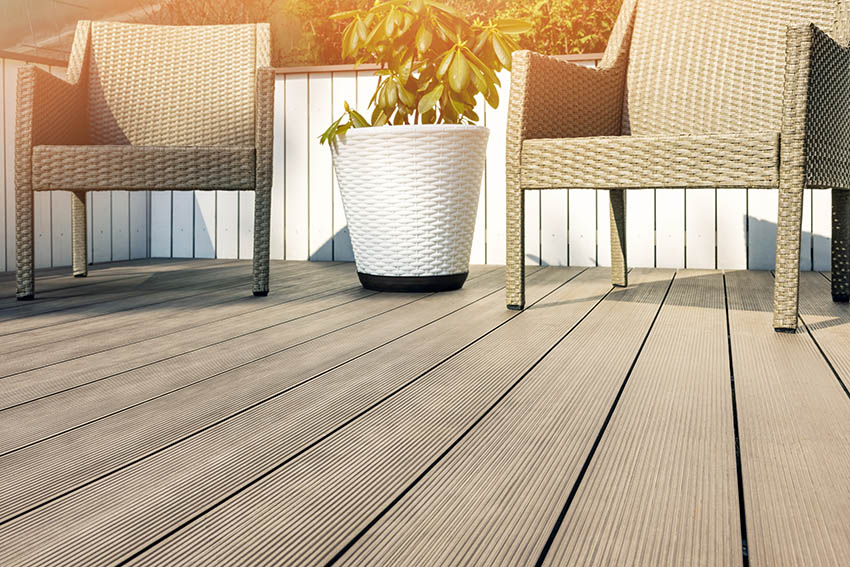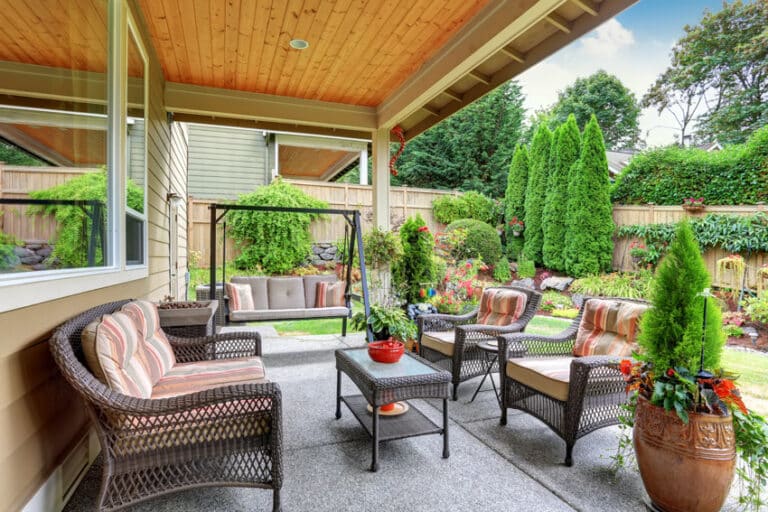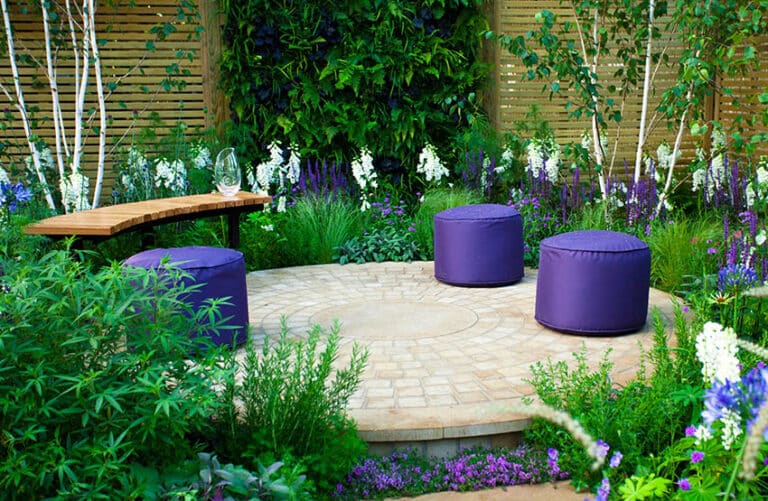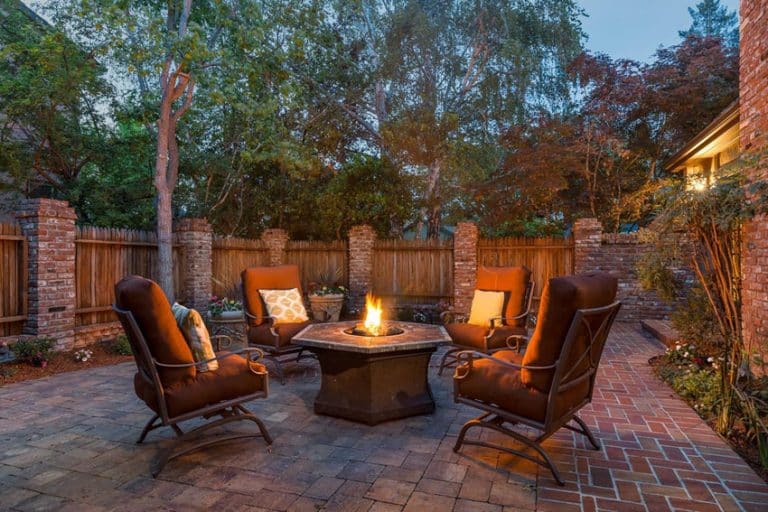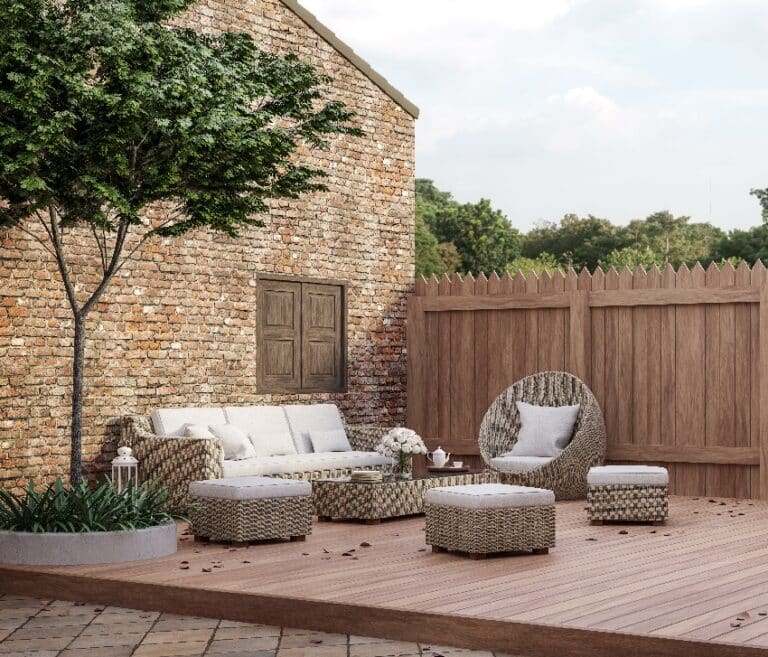7 Key Differences Between Cedar and Composite Decking You Should Know
Here’s our cedar vs composite decking comparison guide covering durability, maintenance, lifespan, cost, and which is best for your backyard deck. In this guide, we’ll also discuss the factors people take into consideration when choosing between these two options and how the selection of decking materials can affect the final product.
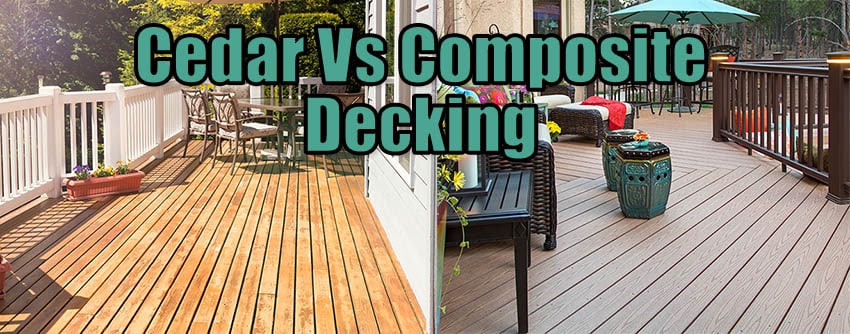
Do I go with composite wood or real wood? This is a common question homeowners tend to ask themselves whenever they’re planning on getting a deck built out. And this is a great question to ask, mind you.
When it comes to real wood, cedar decking, specifically western red cedar, is a popular choice for many people due to its combination of beauty and durability.
There are an awful lot of things to consider when it comes to things like this. You would have to think about the maintenance requirements, the longevity, the appearance, the environment it’s going to be in, and even the pricing range that it comes along with.
In addition to the classic cedar wood options, many homeowners are now considering composite materials such as deck boards made from a combination of wood fibers and synthetic materials.
The deck is a huge investment that can either dramatically improve or decrease the overall real estate value of the home and this is something you ought to consider when you’re figuring out what your wood options would be.
Cedar vs Composite Deck Durability
Cedar decking: The thing is, natural woods like cedar readily absorb water. If you don’t happen to regularly apply stains and other types of finishes, paints and sealers; your wood boards might not last as long as you want them to.
Cedar is susceptible to rotting and cracking without an extra layer of protection. Cedar can also be prone to insects such as termites and the like if it doesn’t have an extra layer of protection, as most of natural woods are attractive to pests.
Composite decking: This material, on the other hand is built to withstand moisture down to its very core. This means that you may use composite decking specifically for the outdoors, exposing it to the elements and not have to worry about it decaying because it was built for it in the first place.
This material is also highly resistant to insects as they usually come treated and are not susceptible to wood-destroying insects. [Source: consumerreports.org Best Composite Decking From Consumer Reports’ Tests]
Decking is defined as a platform either attached to a building, or unattached, as in the case of boardwalks, walkways, piers, docks, and marinas. – Anatole A. Klyosov, Wood-Plastic Composites
Deck Design Options
Cedar: When you opt for cedar wood decks, your design options are basically endless. This is because real cedar wood can come in a wide variety of profiles and grades. This gives a designer tremendous freedom in terms of the look that can be created.
Cedar wood is also something that can be quite easy to work with. It’s lightweight and easy to manhandle. It is something that cuts easily.
More importantly, for as far as floor decking is concerned, it is a type of wood that not only lays flat but stays straight as well. This is critical info that shouldn’t escape you. After all, it’s important for your backyard decks to stay flat.
Because of cedar’s ability to stay flat and its unique characteristics, it is an excellent deck material that allows you to make interesting patterns. This makes for very interesting visual points such as herringbone patterns of virtually anything that you might come up with depending on your budget and quality.
A lot of composite decking companies try so hard to mimic the look and feel of real wood, with properties that aim to imitate wood’s texture and grain, but frankly speaking, nothing really beats the real thing. And cedar is at the top of the pile for choice real wood out there, whether for staining or for its natural appearance.
Composite decking: Companies that manufacture composite wood decking materials go out of their way to spend a lot of time on the research and development of their products, focusing on projects that push these new products out to the market.
All of this is focal to being able to imitate the natural beauty that wood has to offer. There are some companies who come close enough to actually produce textures and faux grain patterns for their composite decking materials.
Many composite deck plank manufacturers offer a wide range of deck railing systems to provide a cohesive look that can be installed quickly and easily.
The only downside to this is that they are actually manufactured and hence, can look and feel that way.
When all is said and done, if you go for composite decking, it can make it all look fake and look like plastic. Another decking material similar to composite is PVC. Read more about PVC vs composite decking here.
It basically comes down to this: you can go for cedar wood which can cost more but looks beautiful overall; or you can pay less for composite decking but also scrimp out on the overall look and design of your outdoor deck.
Deck Material Colors & Finishes
Cedar: Cedar wood is a material that is free from resins and pitch. It makes it quite accepting for it to hold a variety of finishes beautifully. If you want to be on the low end of maintenance costs, you may choose to apply nothing at all.
However, if you are willing to shell out a little bit more, there are a lot of stains, both transparent and semi-transparent, for you to choose from.
Transparent stains can bring out the natural beauty of cedar wood whereas semi-transparent stains let you choose a certain tint that can add a more modern look or finish to your deck.
The long and short of it is that you can make your deck have the color and finish that’s exactly according to your preferences if you go for cedar.
Composite decking: Composite decking materials provide a lot of variety in design and color and there are plenty to choose from. However, once bought, your hands are tied with its refinishing options.
This means that you can’t really do much about it once you’ve gotten it installed because of the mere fact that this material is synthetic.
These composites are oftentimes made out of plastic. It means that they don’t really hold finishes very well.
More than that, most of these composite decking materials will fade when they’re exposed to sunlight and other extreme weather elements; which is often the case because the material is installed outside.
This limits your options a lot because once it fades out and is unable to hold its original color, you can’t really do anything about it anymore, which may be its tendency. Wood fibers in cedar decks may be more resistant to fading compared to composite decking materials.
In addition, cedar decks can provide a unique style to your patio or outdoor living space with their natural appearance, making them an attractive choice for homeowners. However, the installation of both cedar and composite decks can be a valuable addition to your home.
Deck Maintenance
Cedar: Although it may be true that there is no such thing as a deck that doesn’t require maintenance, some decks require less compared to the others. If your deck is made out of cedar, it can be as minimal as once a year.
All you really need to do by way of maintenance is to remove the debris, if any; and wash it off with a non-abrasive detergent. If there happens to be any mold present, you might need to apply a mild bleach solution to get it removed.
If the deck comes with some type of finish or stain, you might need to reapply it. This reapplication process usually happens every 2 to 3 years or depending on how often you would like to update the look of your deck.
Some homeowners would actually let their cedar decks weather out naturally, waiting for it to turn an attractive shade of silver over time. Cedar also stands up to heavy cleaning such as power washing where composite decks may be damaged by high pressure spraying. [Source: siyanda.org Can You Power Wash a Cedar Deck]
Composite decking: Composite decking tends to have the propensity to grow more mildew and mold compared to natural wood. This material usually requires more chemicals and more labor to get it maintained and cleaned the right way.
Another downside to all of this is that manufacturers can end up discontinuing certain styles and finishes so in the event of getting damaged parts, it can be very difficult to replace with the exact pieces you originally had when you first built your deck out.
Lifespan
Cedar: This wood’s lifespan is at a good 15-20 years. This is relatively short as you have to consider the fact that cedar can cost more and can usually require more maintenance.
You can stretch it out a little bit more by being more religious with the reapplications of your stains and finishes or by repainting but the average stays at 15-20 years.
Composite decking: This material has a lifespan of at least 25-30 years. More than that, they even have warranties that come along with them. This means that they really are built to last longer; if you are willing to look the other way when it comes to its downsides on design and its overall look and feel.
Environmental Considerations
Cedar: This material is renewable and sustainable. Cedar is known to leave the smallest carbon footprint on the environment compared to the other building materials out there. This is because it uses less energy to get it manufactured and transported.
Cedar is produced by nature so it produces less water and air pollution, if any at all. More than that, when it needs to be disposed of, cedar is 100% biodegradable which means it will rot easily in a landfill.
Cedar production also comes from forests that commercially and responsibly managed so deforestation is kept at an all-time low.
Composite decking: Getting composite decking materials processed has been known to produce a surplus of greenhouse gasses compared to cedar wood, which is known to reduce them. This difference in environmental impact can also be observed in house construction, where concrete materials have a higher carbon footprint than wood.
More than that, a certain percentage of this material is actually made out of plastic which means that it will have trouble decomposing in a landfill. This is an important consideration particularly in construction projects, as it affects not only decking but also the sustainability of the overall structure. [Source: greenamerica.org All Hands on Deck: Green Deck Materials]
Deck Cost
Cedar: Initially, natural woods like cedar would cost less on the front end. However, you have to take the annual maintenance of this material into account when comparing it to composite decking in the context of the fence and overall house construction costs.
There is no set pricing for this, though, because it would depend on the value of the wood species of the cedar that’s being used but that is the general rule of thumb. It’s cheaper to buy it initially but it will cost you more money to maintain it as it degrades faster.
Composite decking: This material would cost more on the front end, but it usually pays for itself over the next 2 to 3 years because it doesn’t really require as much by way of maintenance.
There may also be varieties with the design, thickness, textures, and colors but on average, it would cost more than natural wood. Again, a composite deck’s value in cost lies in its almost absent need to get it maintained, which makes a significant difference in terms of long-term construction investments.
What’s Best Cedar Or Composite For Decks?
The actual decision of choosing between the two can be quite difficult. The choices are aplenty but one thing that can help you out a little but would be to take out your top pick from the cedar woods available and them compare it head to head with your favorite composite decking material.
This simplifies your choices by whittling it down from dozens to just two. Here are the side-by-side wins for your reference:
Cedar: Cedar wins by a landslide when you consider design options, colors and finishes, and how friendly it is to the environment. If these 3 factors are something you’re big on, then you might be leaning more on getting cedar for your deck. Read more about cedar deck pros and cons on this page.
Composite decking: This material has the advantage when it comes to its durability, lifespan, having minimal maintenance and its projected cost in the years to come after considering its maintenance.
If you’re big on getting something that saves a lot of money and isn’t too labor intensive; then composite decking might be best for you.
If you are interested in designing a deck or planning house construction, there are programs that can help. See our list of the best deck design software on this page.


